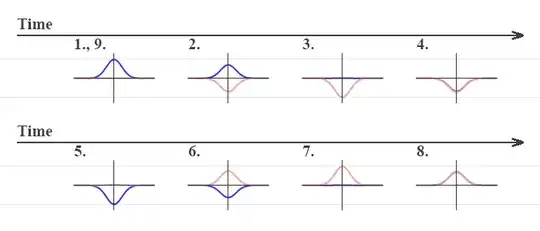Here're key-frames from a time evolution of a quantum harmonic oscillator in it's ground state (source):

So, I do understand that such a state may equally well describe grand variety of systems, but for now I want to focus on just 1 "particle on a spring" example, just to see if the following description will be all on itself valid:
| Time | Particle's position | Particle's momentum (direction only) |
|---|---|---|
| $1., 9.$ | $x_0$ (equilibrium point) | $x_1$ (maximum stretching) |
| $3.$ | $x_1$ | $x_{-1}$ (maximum compression) |
| $5.$ | $x_0$ | $x_{-1}$ |
| $7.$ | $x_{-1}$ | $x_1$ |
Btw, I do understand also that:
- these $x$ points are arbitrary: we could've started at any other point than $x_0$ (with it's role as "equilibrium point" unchanged), and $x_1$ and $x_{-1}$ roles might've been swapped.
- measuring upon the system in the table would not have revealed a "particle" in it's $x$ position (with described momentum), but rather in any of possible outcomes.
I'm just interested in validity of meaning I've put in that table - say, as a time evolution of just 1 eigenstate.